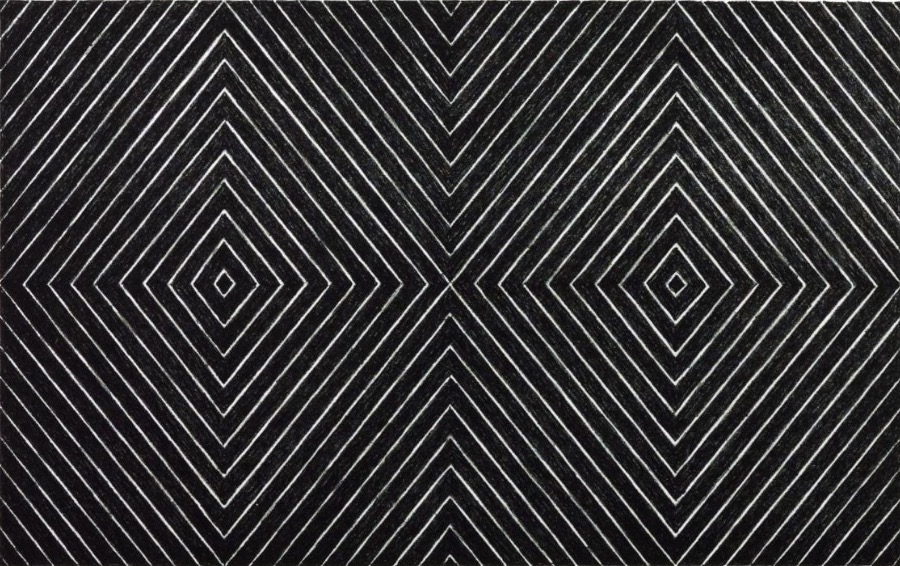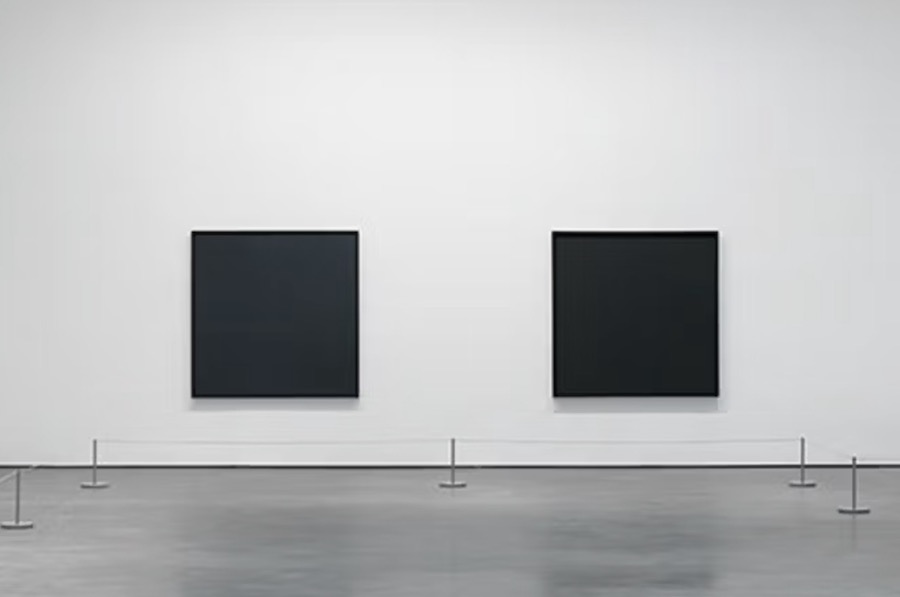In 2016, Anish Kapoor acquired exclusive rights to the unique Vanta black pigment, reported to be the blackest shade of black in existence. Artists have notoriously been fascinated with blacks for generations. So this week, Artlyst celebrates the Top 10 black paintings. Black, as the opposite of white, is the result of the absence or complete absorption of light. It is simply a colour without colour or hue. Black was first used by artists in Neolithic cave paintings, and was one of the main colours used by Greek artists. Over the centuries, it has had many associations, ranging from mourning, death, witchcraft, evil, and magic, to becoming the colour of choice for 14th-century royalty and high fashion in the 20th century. It conjures up feelings of secrecy, the unknown and mystery and as a way of hiding from the world. The first all-black paintings were a release from the burden of subject matter, form and colour.
Top Image: Frank Stella, Untitled, 1967
10. Agnes Martin The Sea 2003
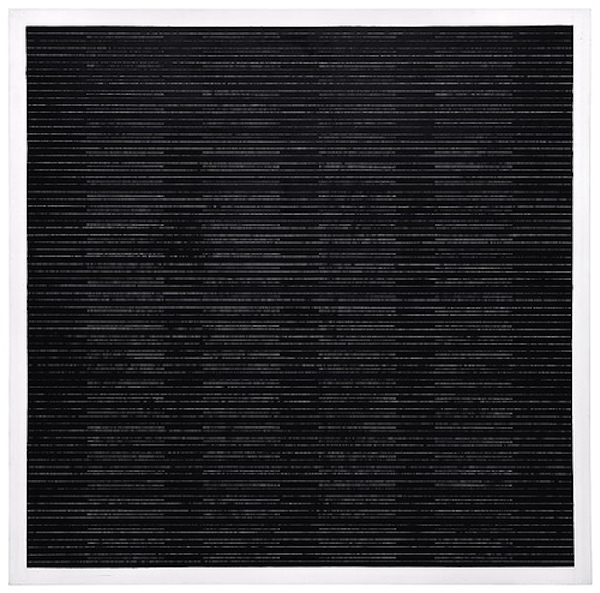
Canadian-born Agnes Martin is perhaps most recognised for her evocative paintings marked out in subtle pencil lines and pale colour washes. Although restrained, her style was underpinned by her deep conviction in the emotive and expressive power of art. Martin believed that spiritual inspiration and not intellect created great work. ‘Without awareness of beauty, innocence and happiness’ Martin wrote ‘one cannot make works of art’.
9. Robert Rauschenberg
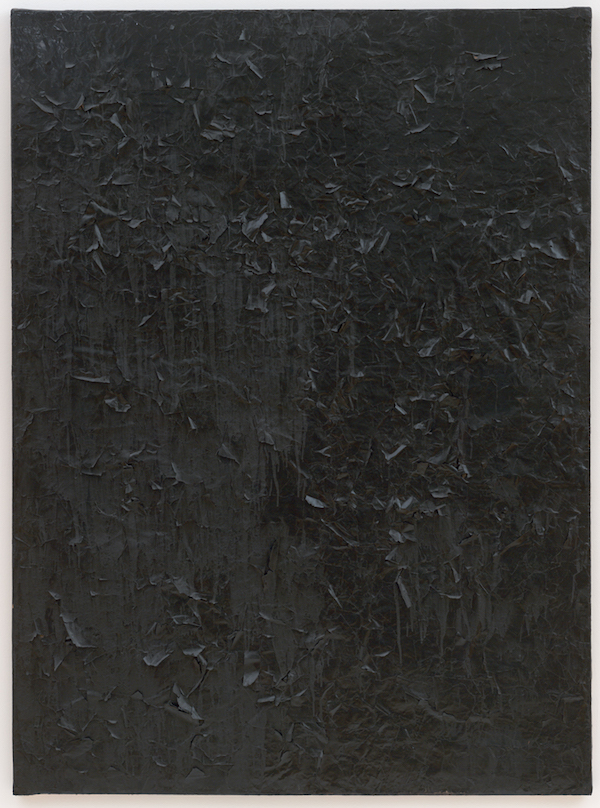
Untitled (Glossy Black Painting) 1951
Robert Rauschenberg, between 1951 and 1953, produced a body of black paintings often thought of as a series, but not conceived as such by the artist. These black paintings are usually matte or glossy-black paint, sometimes on multiple panels, made on canvas and largely mounted on a newspaper ground that is sometimes revealed but occasionally only apparent by the activated picture surfaces. Together, they represent Rauschenberg’s extended study of the boundary between painting and collage.
8. Lucio Fontana
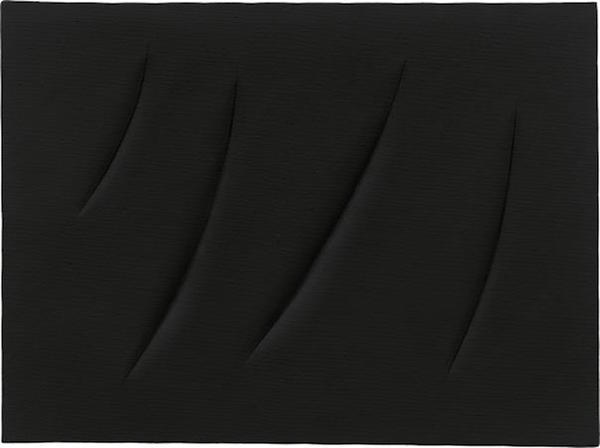
Concetto spaziale, Attese 1961
Lucio Fontana’s respect for the advancements of science and technology during the 20th century led him to approach his art as a series of investigations into a wide variety of mediums and methods. From 1947 on, Fontana’s experiments were often entitled Concetti spaziali (Spatial concepts). During this period, he punctured the surface of his canvases, breaking the membrane of two-dimensionality in order to highlight the space behind the picture.
7. Kara Walker
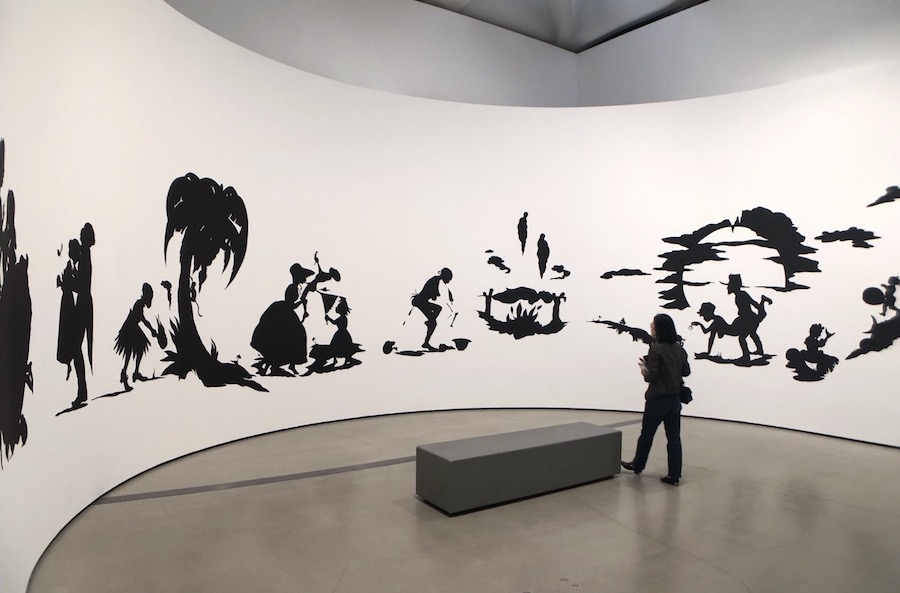
In African’t, 1996, Kara Walker’s cutouts are nearly life-size, becoming a theatre of remembrance and forgetting. Here, blacks and whites, men, women, and children, all participate in pre-Civil War scenes of degradation, sex, and violence. African’t present many intimate moments within the larger work, pushing traditional narratives and familiar characters (such as Brer Rabbit from the Uncle Remus tales) to physical and psychological extremes of violence and inhumanity. Walker is intent on exposing these extremes, these flashes of terror, in the memories and attitudes of the present, demonstrating that the repression of history comes only at society’s peril. This is not technically a painting as it is cut paper applied directly to the wall.
6. Ad Reinhardt
Most famous for his “black” or “ultimate” paintings, Ad Reinhardt claimed to be painting the “last paintings” that anyone can paint. He believed in a philosophy of art he called Art-as-Art and used his writing and satirical cartoons to advocate for abstract art and against what he described as “the disreputable practices of artists-as-artists”.
5. Edmund de Waal
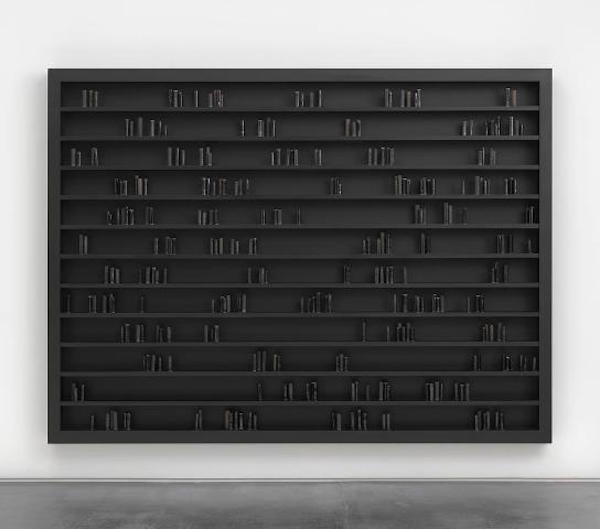
Atemwende, 2013 302 porcelain vessels, aluminium and plexiglass cabinet
Atemwende comprises a series of vitrines containing thrown porcelain vessels arranged in specific groupings. From simple pairs of pots to complex multitudes in their hundreds, these minimalist dichotomies in black and white suggest the sequences and patterns of a musical score, while titles cite the poetry of Paul Celan, Wallace Stevens and others.
4. Louise Nevelson
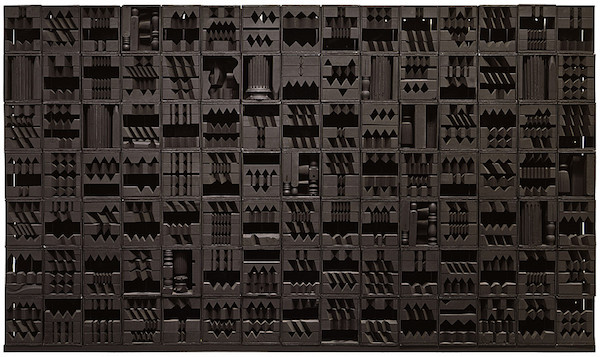
Luminous Zag: Night 1971
Nevelson’s mature work emerged in the mid-1950s, when she began to assemble found wooden objects into constructions, most of which she painted uniformly black. In so doing, she aligned herself with many contemporary artists who embraced found objects to create what has become known as Junk art. Her large-scale wall constructions reflect her interest in pre-Columbian stelae as well. The scale and formal purity of the all-black and all-white sculptures, in which the frontal relief surface and uniform colouration focus the viewer on the play of light and shadow, also suggest the solemnity and grandeur of altar paintings.
3. Mark Rothko
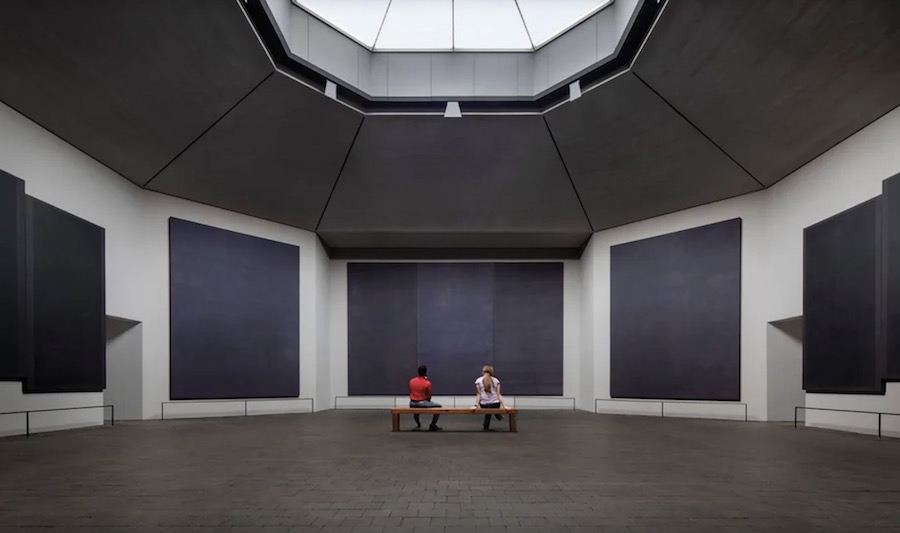
In 1964, Rothko was commissioned by John and Dominique de Menil to create a meditative space filled with his paintings in Houston, Texas. The design included fourteen black paintings in a site-specific installation. Sadly, Rothko’s suicide in 1970 meant that he did not live to see the chapel’s completion in 1971. Susan J. Barnes states, “The Rothko Chapel…became the world’s first broadly ecumenical centre, a holy place open to all religions and belonging to none. It became a centre for international cultural, religious, and philosophical exchanges, for colloquia and performances. And it became a place of private prayer for individuals of all faiths”.
2. Anish Kapoor
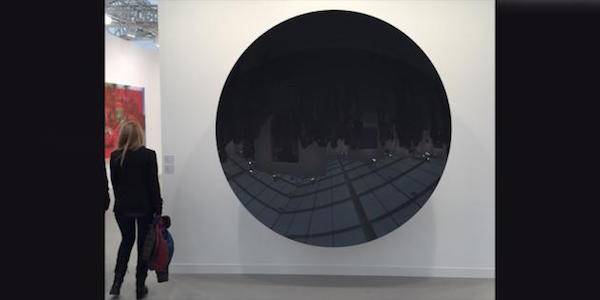
In 2016, Anish Kapoor acquired exclusive rights to the unique Vantablack pigment, reported to be the blackest shade of black in existence. The Turner Prize winner, who is best known for his magnificent, monumental mirror sculptures and the downright ugly Orbit/Mittel tower constructed for the 2012 London Olympics, is currently the only person in the world who is allowed to paint using this colour, and has been doing so since 2014. He recently said in an interview, “It’s effectively like a paint, it’s so black you almost can’t see it,” he said. “It has a kind of unreal quality and I’ve always been drawn to rather exotic materials because of what they make you feel.
1. Kazimir Malevich
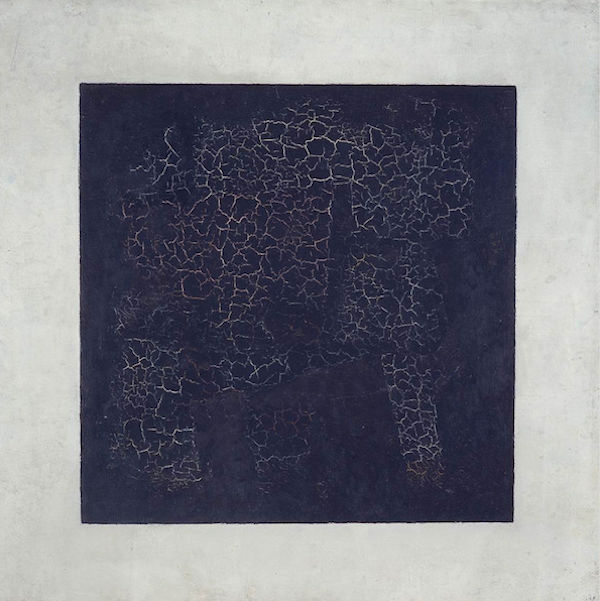
Kiev-born Kazemir Malevich wanted to completely abandon depicting reality and instead invent a new world of shapes and forms that belonged exclusively in the realm of art for art’s sake. While trying to desperately free art from the dead weight of the real world, he took refuge in the form of the square. The result was the 1915 painting Black Square, which was exhibited at The Last Futurist Exhibition in 1915. He made four variants of which the last is thought to have been painted during the late 1920s or early 1930s.

